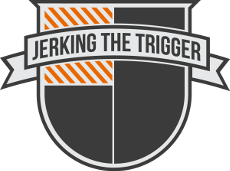Many shooters spend time on the range honing their emergency reloads into smooth, efficient actions. But, how many shooters spend time on the range practicing magazine management as an underlying structure and strategy for success with their reloads? There are actions that you can take before the emergency reload that can increase your efficiency, or better yet, preclude the need for an emergency reload all together.
Magazine management is simply the act of rotating your magazines in your chest rig, belt rig, or plate carrier so that you maximize the chance of having a magazine in the optimal position for reloading when you need one. It is a dynamic decision making process that is happening at each reload and with just a little forethought and practice, it can be second nature.
Fast, Faster, Fastest
Each shooter’s strategy for magazine management will vary based on the way that they carry magazines, the shooter’s strong hand, and other factors. The first step toward developing your strategy is identifying where your fastest reload comes from.
As a general rule, your fastest reload will come from the pouch that is closest to your support hand (non-dominant hand) simply because this will be the easiest to reach. Open top pouches will be faster than those with flaps or retention of some kind. Additionally, it is generally faster to reload from belt level than from chest rig level. This combination of factors is why many shooters will place an open top magazine pouch on the support side of their belt to serve as a dedicated emergency reload location.
Once you have identified the fastest reload location, you should order the rest in terms of speed and ease of use. Generally, the closer your magazine pouch is to your weapon side (dominant hand), the slower and more difficult it will be to reach.

- This chest rig shows the available reload locations numbered from fastest (1) to slowest (3) for a right handed shooter.
Lets look at the simplified example of a 3 cell chest rig. The fastest reload will be the one closest to the support hand which is the pouch marked with a 1. The slowest reload is closest to the weapon hand which is the pouch marked with a 3.
Now that you have ranked your pouches in order based on speed and ease of reach, you have already done much of the work. You can use this information to develop your magazine management strategy. Remember, the goal is to always have a magazine available in the fastest reload location. This is accomplished by choosing which pouch you reload from based on the situation and rotating magazines when possible.
Choose the Pouch Based on the Situation
Speed is not the emphasis with administrative and “tactical” reloads so they should come from your slowest pouches. Using our example chest rig from above, this means that an administrative or tactical reload will come with pouch 3. By choosing to complete your reloads that do not require speed from your slowest pouches, you help ensure that there will be a magazine available in your fastest reload location during an emergency reload.
Top Off
Let’s carry our example further. You have just completed a administrative reload from pouch 3 and completed a course of fire. Before you start the next course of fire, it might be wise to complete another tactical reload from pouch 2 so that you can start the next course of fire with a topped off rifle. By keeping your rifle topped off from the slowest location, you accomplish two things. Most importantly, you reduce the chance that you will need an emergency reload at all and secondly you keep that all important fastest pouch ready to go with a fresh reload.
Rotate, Rotate, Rotate
What if you run through a course of fire that requires an emergency reload and find yourself with a moment before the next course of fire begins? This is an excellent time to rotate magazines. Top off your weapon, then take the magazines from your slowest pouches and move them over to your fastest pouches. Remember, the goal is to always have magazines ready in your fastest pouches.
Back to our example chest rig. If you emergency reload from pouch 1 and you find yourself in a lull in the action, rotate the magazine from the slowest available pouch (2 or 3) into pouch 1. Now you are ready for another emergency reload.
Layered Approach
If you have magazines in multiple locations like on a belt and chest rig, it can help to think of your gear in a layered approach. I choose to use a belt rig as my base line since I carry a firearm daily. It makes sense for me to reinforce going to the belt for my reload in training since the same motions will work for reloading my handgun or my carbine. If I am taking a carbine course, I will always have my belt rig on but I usually only have a chest rig on if the round count and pace of the course requires additional magazines.
My belt is typically going to be my fastest reload location. I think of my belt as my main support gear while my chest rig is secondary. The belt feeds my rifle and the chest rig feeds my belt. I am constantly rotating magazines from my chest rig to my belt to ensure that there is always a reload available in my fastest location.
Conclusion
Magazine management isn’t rocket surgery. Identify your fastest reload locations, choose your reload location based on the situation, top off, and rotate. Identify your strategy at home, practice it on the range, and soon it will be second nature.







